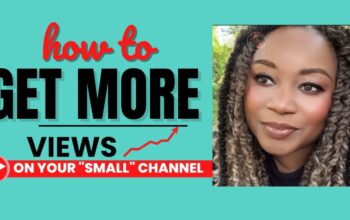
In less than 2 months, some of the 45 million Americans without healthcare will be able to sign up to finally get it as the next stage of the Affordable Care Act , euphemistically called Obamacare, gets rolled out starting this October 1.
That is the date when States will start enrolling some of the 21.5 million more adults under the age of 65 who will be covered under an expansion of Medicaid. Before, the program covered 60 million poor children, disabled and some elderly. Each state determines whether it will expand coverage and, if so, the criteria for allowing new adults to get access .
Everyone has to get insurance by 2015 or face a penalty
To pay for this expansion in coverage under the law passed in 2010 in Obama’s first term, the government has required all Americans get health insurance by 2015. They’ll get access to state-created online- marketplacess to shop for plans.
Those who do not buy health insurance will be assessed a penalty when they file their annual tax returns. The fee is graduated and starts at just $95 for an individual and up to $285 for a family or 1% of their household income, whichever is higher. It graduates exponentially over the next 3 years to $695 for an individual or 2.5 % of the household income in 2016. To some who usually get a tax refund each year, that is still lower than the cost of healthcare and they may opt to eat the cost and get less tax refund money.
Mandatory insurance forces people to take responsibility for their healthcare in advance
Obamacare is about forcing people to be responsible for their own healthcare in advance rather than force the government to shoulder the burden should they need care unexpectedly.
The mandatory insurance is meant to save the government money it now spends on uninsured when they have to go to the emergency room for care. Currently, US law prohibits hospitals from not providing emergency care to anyone who comes to them.
Right now, when hospitals are unable to collect on hospital stays from uninsured, they eventually apply to the government for a reimbursement from the Medicaid fund.
So right now, taxpayers are already shouldering the burden to care for all Americans, including the 54 million uninsured when they wind up in the emergency room.
Obamacare is trying to catch those who usually stiff hospitals up front and get them under Medicaid rather than pay for them on the back end as we do now.
The idea of getting those people to pay up came from conservatives and Republicans who usually tout individual responsibility. .. but recently, they have changed their minds on it.
The intent behind the exchanges is for competition to encourage premiums across the board to drop. The essence of a free market economy is the availability of options to inure competitors to create better products, and make their services and prices competitive. This is an alternative to government regulation. It’s part of the root of Capitalism. This too is a conservative principle traditionally embraced by Republicans – the very same ones opposed to the law.
How will the expansion work? What’s the timeframe?
To make the healthcare act work, the federal government has a challenge to get 7 million enrolled the first year, as it hopes. Through a vigorous public awareness campaign, the Feds will have to convince 2.5 Million healthy young people who make up a third of the uninsured to sign up for healthcare. And although 73% of those surveyed 30 and under believe getting health insurance is the responsible thing to do, not all will sacrifice their weekend beer habit to pay for monthly premiums.
How are State governments involved? What are the State Exchanges.
To implement this requirement, the federal goverment has incentivized some states to take up some of the burden and set up their own exchanges – an online marketplace where uninsured citizens can shop for the best poilcy for them. Insurance companies nationwide, even those not already in a state can apply to be included in any state’s exchange. For the 27 who have not agreed to set up their own exchange systems, the federal government is scrambling to set up one for them.
The Congressional Budget Office estimates 24 million to sign up through 2016. Insurance companies, not tax payers, fund State exchanges.
Kaiser Family estimates that the exchanges will cost states between $25 to $65 million dollars to run, but most hope to offset those costs via the fees they charge insurance companies to enroll. It cost about $25 million annually to run an exchange. The cost were to be offset by the fees insurance carriers pay to be included. And the federal government has promised to help states with the cost via a reimbursement. Some skeptical states didn’t want to take the risk
Insurance companies are willingly singing up on state exchanges. They are a win for insurers. Because Obamacare requires everyone to get health insurance, companies that sell itessentially have been guaranteed a wider market of potential new customers
And then there’s a Learning Curve Challenge
The challenge is that many Americans still aren’t paying that much attention. Many Americans still have no clue that Obamacare is even the law of the land. A Kaiser family poll this April showed that 40% of those surveyed didn’t know it was in effect and 7% thought the US Supreme Court had overruled it. Rather, it upheld the law.
A third of the uninsured are concentrated in the heavily populated large states of Texas, California and Florida.
A Gallup poll this summer revealed that 53% of Americans didn’t know they faced a penalty if they didn’t get insurance by 2015. A forthcoming article to be published in the Journal of Health Economics finds that most Americans don’t even understand basic terms associated with healthcare. Only 14% of respondents knew the most basic terms, “deductible, copay, co-insurance and out-of-pocket maximum.”
But the law has already taken effect and benefitted some groups
-
Young people An estimated 7 million young people between the ages of 18- 26 have been able to stay on or sign up or stay on their parents’ plans to get healthcare.
-
Families preventive screenings Many families and individuals may or may not realize that they no longer have to pay for certain sick visits or screenings because of the law. It required insurance companies to eat the co-pay costs of Mammograms, well-women visits, gestational diabetes for pregnant women, cancer, domestic violence screenings and breastfeeding supplies.
-
Insurance policy holders Also, this summer, 12.1million individuals and businesses got $1.1 Billion in rebate checks from their insurance companies. The rebates came from insurance companies that made their insureds pay for overhead such as CEO bonuses, administrative costs and other charges that had nothing to do with providing healthcare.
-
Seniors It also eliminated a coverage gap where seniors’ prescription costs skyrocketed for a brief time. Under the law, seniors subject to the lapse were spared of having to fork up thousands for their prescriptions.
-
Those with pre-existing conditions: Insurance companies were prohibited from banning people with pre-existing conditions from coverage.
Getting States On board is challenging too
In less than 45 days, some states will start enrolling newly qualified adults into their Medicaid plans and make available healthcare plans from across the nation under state exchanges. The federal government is under the gun given that 27 states had opted out of creating their own exchange programs leaving it up to the feds to set up. Nonetheless, when Medicaid was first created in 1965, most states didn’t offer it either but over the following few years, almost all got on board when their state residents pressured them into it.
Those who buy Private Insurance can shop for better options
The 16 million Americans who currently buy independent healthcare, not through an employer, will get more options, including those available in plans in other states through exchanges.
Through exchanges programs set up on state websites, insurers who participate will present their plans, coverage, copay, deductibles in the pot among other insurance plans.
Families and Individuals Who already have insurance may also be Eligible for Insurance Premium Subsidy
Approximately 26 million Americans who are already insured may be eligible to receive government subsidies for those up to 400% of the poverty line of $45,000 for an individual or $92,000 for a family of four. Those who are already insured and perhaps pay out-of-pocket or through an employer plan could be eligible to receive a subsidy in the cost of their current premium via a government tax credit.
Test State Case: Maryland
Maryland is one of 17 states nationwide that has agreed to set up an exchange and it is among a few of them that has already set up a website, assembled insurers and is nearly ready to begin enrolling new Medicaid cases on October 1 through its web portal:http://www.marylandhealthconnection.gov
On January 1, 2014, already insured residents and those who don’t qualify for Medicaid can get access to the part of the website that will empower them to compare all the various available plans, and pick the one that best meets their needs.
One application Using one application, they can apply for the subsidy, pick a plan and find out if a family member may qualify for Medicaid or the State’s Maryland Children’s Health Program (MCHP).
Its website also offers a calculator to help small businesses determine if they will be eligible for a tax credit for their portion of employee health insurance they currently pay.
Even though only employers with 50 or more employees will be required to provide health insurance, those who have less than 25 may also be eligible for a tax credit.
Maryland is a state to watch to determine how many enroll and how implementation of this stage is working out.
Other benefits. If you already have insurance, beginning in 2014, they will have to cover
Emergency services
• Hospitalizations
• Laboratory services
• Maternity care
• Mental health and substance abuse treatment
• Outpatient, or ambulatory care
• Pediatric care
• Prescription drugs
• Preventive care
• Rehabilitative and habilitative (helping maintain daily functioning) services
• Vision and dental care for children
At this point, whether one has insurance or not, all will have to start doing some basic research on the available options and prepare to apportion their budgets accordingly to absorb a penalty or to pay for a reasonable plan that meets their needs. Those with insurance, should prepare to apply for tax credits or be on the look out for benefits. They should also monitor their bills and premiums to make sure they’re not being charged for items that the law says should not be.
Jay Jay Ghatt is also editor at Techyaya.com, founder of the JayJayGhatt.com and JayJayGhatt.com where she teaches online creators how to navigate digital entrepreneurship and offers Do-It-For-You Blogging Service. She manages her lifestyle sites BellyitchBlog, Jenebaspeaks and JJBraids.com and is the founder of BlackWomenTech.com 200 Black Women in Tech On Twitter. Her biz podcast 10 Minute Podcast is available on iTunes and Player.fm. Follow her on Twitter at @Jenebaspeaks. Buy her templates over at her legal and business templates on Etsy shop!



